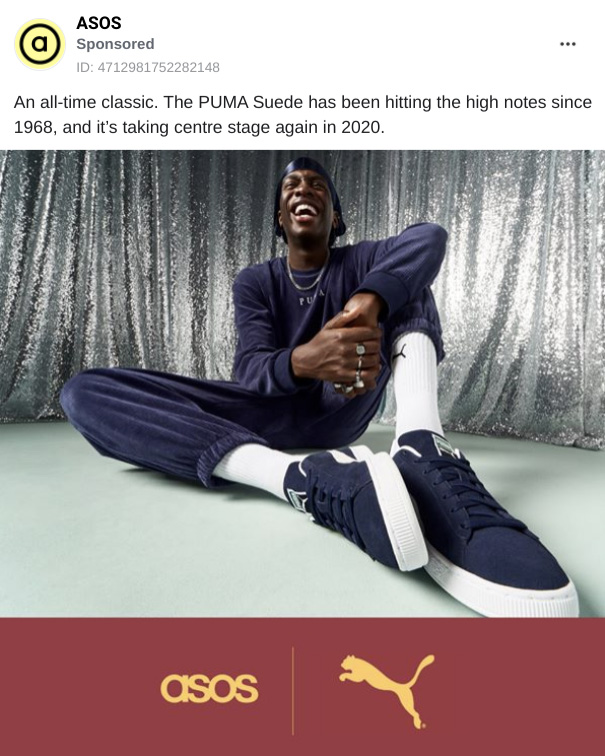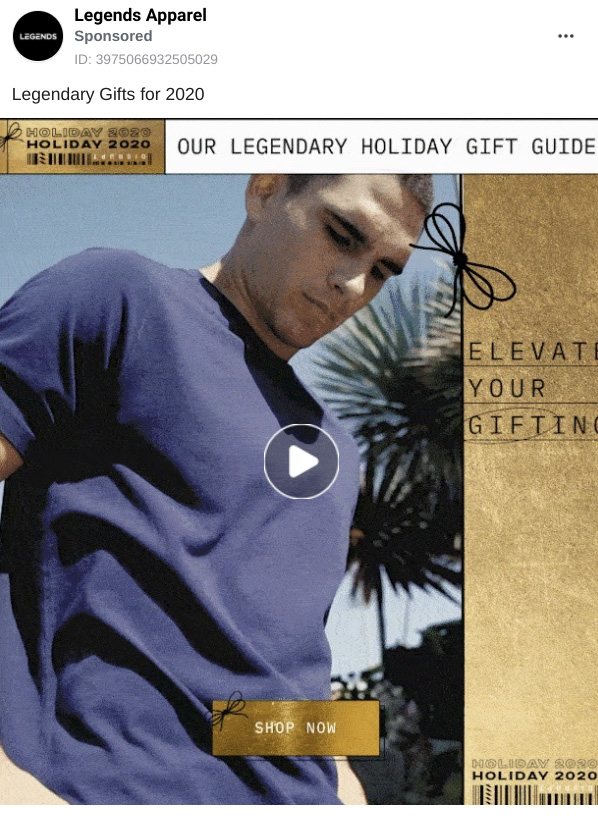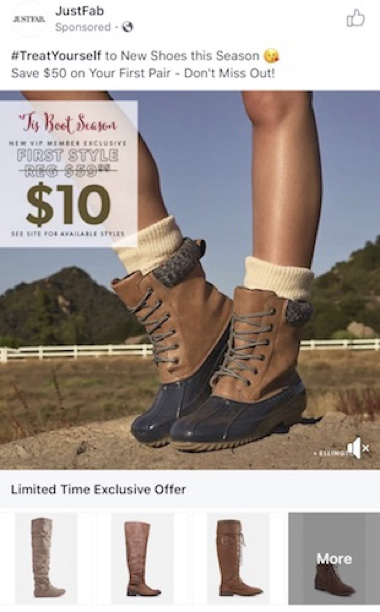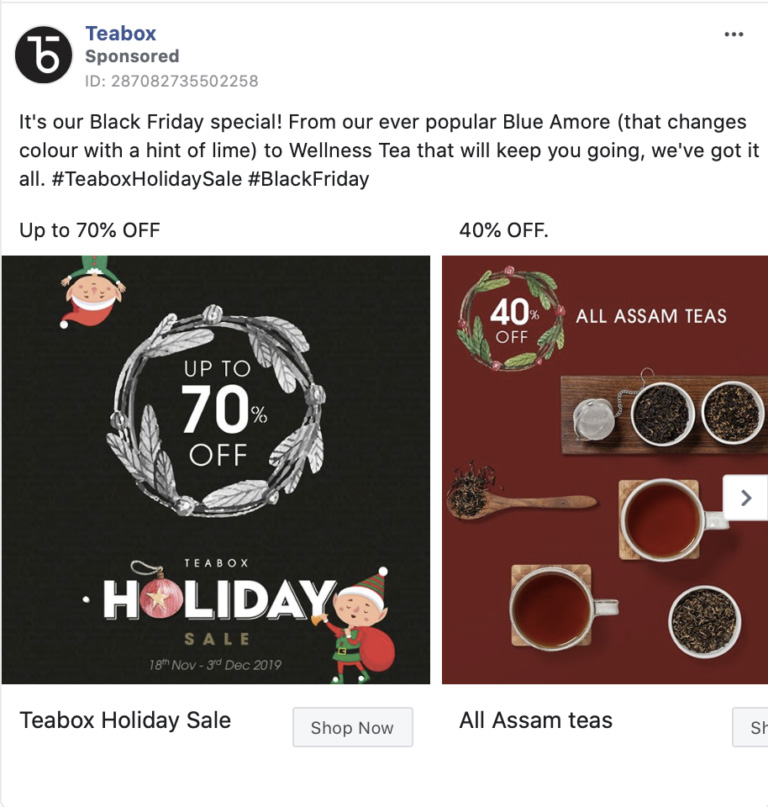Facebook Marketing for Shopify Stores: A Complete Guide
Facebook used to be a platform traditionally used to keep in touch with friends and family.
Now, it has become one of your most powerful marketing workflow tools as an ecommerce store. From a large user base to countless ways to target potential customers, the platform comes with everything you need to create winning campaigns.
If it’s your first time using Facebook to market your brand, however, the platform may seem intimidating, especially as news feed algorithms frequently constantly change by the day.
So to help you out, we’ve outlined this guide on how to start promoting your store on Facebook.
Let’s dive in.
Try MESA free for 7-days and enjoy support from automation experts!
Topics:
Why Should Facebook Marketing Be Part of Your Strategy?
Facebook represents the perfect opportunity for ecommerce businesses to promote their brand. Here are the main reasons why Facebook is one of the most powerful marketing tools for your store:
A Large Pool of Customers to Reach
Facebook offers an abundance of customers to target: around 2.7 billion people worldwide are actively using the platform. That’s almost a third of the planet at your fingertips!
So if you’re not targeting customers on Facebook, you’re missing out on countless opportunities.
Boost Your Brand Awareness and Website Traffic
Boosting brand awareness and driving traffic to your store is vital for ecommerce success. The more people know about your brand, the more sales and leads you’ll generate.
Facebook makes it simple to spread the word about your store. For example, you can set up targeted ads on the platform for various products on sale. The ad will redirect users to your website when they click so they can purchase or check out your offer.
On top of revenue growth, Facebook can also boost your SEO. As more people visit your store, your website will rank higher in search engines.
Endless Segmenting Options
Another crucial aspect of successful marketing is segmenting. By targeting the right customers with the right offers, they’ll be more likely to convert.
With Facebook ads, you can target customers based on different factors, such as their demographics, past behavior, interests, and more. You’ll be able to deliver personalized ads that convert and get customers to pull the trigger.
For example, a customer’s purchase history provides you with solid clues on what products catch their interest. You can use their previous behavior to your advantage by running ads on related products that complement their order.
It’s Easy to Measure
Measuring the results of your Facebook ad campaigns is a straightforward and simple process. The main metrics you need to follow to measure your success include:
- Impressions
- Clicks
- Conversions
To track your results, all you have to do is install a conversion pixel to your Facebook ads. It’ll help track your activity and give you a full picture of how you’re performing.
You can then use the insights as part of your A/B testing process to eventually create the right ad campaign that drives sales.
How to Get Started With Facebook Marketing
Now that you know the benefits of marketing on Facebook, it’s time to take action. Here’s how you can get started marketing your brand on Facebook:
Create Your Facebook Business Profile
- Create your profile: Go to facebook.com/business. Once you land on the page, click on “create ad” at the top right corner of the screen with a drop-down menu. Then, proceed to click on “Create a page”.
- Choose what type of business you are: As you create your profile, you’ll need to enter business details to define what type of brand you are. In this case, you need to mention that you are an ecommerce store.
- Set up a profile picture: You’ll need to include a profile picture to start personalizing your Facebook profile. It could be your company’s logo or a branded recognizable shot.
- Add a cover photo: A cover photo conveys to Facebook page visitors what your brand is all about. It’s also an opportunity to showcase any upcoming sales or new products that you’re releasing.
- Write a 155 character description: Make sure to keep your company description short and sweet.
- Set up a vanity URL: The link is similar to Twitter’s handle and can be up to 50 characters.
- Include an about section: Lastly, make sure to create an about section where you can showcase your company values, mission, origin story, and anything else that humanizes your brand.
Set up Your Facebook Pixel
The next step is to set up your Facebook pixel.
It’s going to help keep track of your ad campaign results so you can proceed to improve your campaigns over time. It also allows you to retarget previous visitors that browsed through your store but didn’t make a purchase.
Thankfully, setting up your Facebook pixel on Shopify is an easy process. Here’s how you can do it:
- Find the pixel in your Facebook Ads Manager
- Copy the account’s pixel ID number
- Select Online Store within the Shopify admin and go to Preferences. Next, go to the Facebook Pixel tab and paste in your ID number.
That’s it! Your Facebook business page is now all ready to start promoting your store on the platform.
Other Things to Consider for Your Facebook Business Page
Even when you set up all of the above, there are extra things you can do to take your Facebook page up a notch. Here are some suggestions of things you’ll want to handle for your business page:
- Set up Roles and Permissions for Your Team on the Page: You can make people on your team administrators, editors, moderators, advertisers, analysts, or live contributors. Only administrators have complete access to all aspects of your Facebook page.
- Add a Call to Action: You want to make sure that your Facebook page encourages customers to take a specific action. It could be purchasing your product or signing up to your email list.
- Verify Your Page: It’s the little things you do that count in marketing. Getting a verification page on Facebook helps build the trust of customers and shows that you’re the real deal.
The Different Type of Facebook Ads
Facebook offers various ways to structure your ad. You can also place ads in different locations to target the customer, which include:
- On the user’s home page as they scroll through their feed
- On the sidebar of the Facebook page
- Inbox ads and sponsored messages on Facebook Messenger
- In live stream videos on the Facebook feed and the Audience network
The format that best fits your campaigns depends on various factors, such as your offer and the goal of the ad itself. Let’s dive into some of the different types of Facebook ads that you have in your arsenal:
Image Ads

Image ads are the most traditional form of ads on Facebook. They’re fairly simple to set up on the platform and are a great way to spread awareness.
Image ads are perfect for companies who don’t have too much to spend yet on advertising. They’re also great if it’s your first time using Facebook ads, and you want to get a feel of how the tactic works.
Video Ads

Facebook also allows you to use video content to engage customers and drive more traffic to your website.
For your ad, you can either create the video within Facebook Ads Manager or publish a video post from your page. It’s a unique way to promote your brand and engage customers.
Collection Ad

Facebook collection ads offer a full-screen experience that users can browse through to purchase your products. The ad is powered by Instant Experience so that users don’t have to leave the Facebook page to learn more about your offer.
They’re great to show off our product collections, especially during special events such as Black Friday. You can include products that are on sale and let the customer browse through the items on their feed.
Carousel Ad

With Facebook carousel ads, you can include up to 10 videos or images in your ad. Each will include a link to your website or products.
They’re great for not only promoting multiple products but also see which posts or offers work the best with your audience.
The Power of Facebook Marketing Automation
Marketing your brand on Facebook is an effective way to boost awareness and sales. At the same time, however, it can be a very time-consuming process.
For example, let’s take a look at what goes behind a Facebook ad campaign. You’ll have to frequently test your ads, manage your budget, cancel as that is underperforming…managing all of this by yourself can be grueling.
As your store starts to scale, you’ll need a strategic way to monitor your Facebook campaigns while saving time to focus on other areas of your business. That’s where Facebook automated ads come in.
What Are Facebook Automated Ads?
Facebook ads can take up hours to monitor and optimize. With Facebook automated ads, you can set up specific actions in advance when you meet certain conditions.
You can automate some of the most common tasks of running a Facebook ad campaign, which includes:
- Launching new ad sets
- Setting up ads based on the target audience
- Duplicating or stopping ads
- Adjusting your budget
You’ll be spending less time on Facebook while optimizing your ad campaigns for the best results.
Benefits of Automation
Automation can make a big difference to your ad campaigns. The main benefits that come with Facebook automated ads include:
Less Guesswork, More Results
Automation makes it easy to A/B test your ad campaigns without spending too much on measuring the performance of each ad.
You can create up to six different versions of your ad, along with suggestions on how to optimize it. Once the ad is running for some time, Facebook will only show the highest-performing one.
Automate Repetitive Tasks
Brands must work hard to get the prospect’s attention on social media to get the best results. But they must also be efficient with their time so Facebook isn’t their only focus.
Testing and managing multiple ads can take a toll on your schedule. After all, running Facebook ads shouldn’t be the only aspect of your digital marketing strategy.
Automation streamlines difficult tasks that come with Facebook ad management so you can focus on other business activities. With Facebook automated ads, you won’t have to worry about going through the hassle of frequently testing and launching your campaigns on your own.
To take it up a notch, you can also use software like MESA that sets up Facebook ad workflows that save you time. For example, when inventory runs low, you automatically pause advertising.
Recommendations to Improve Your Ads
Facebook automated ads provide you with insight into how your ads are performing and what you can do to improve them.
For example, for better results, you may get suggested to change the image or video that you’re using in your ad. It will also improve your automatic audience, such as people who have interests similar to your page.
Better Use of Your Marketing Budget
Lastly, automation helps grow your business by saving you money on each marketing campaign.
Facebook automated ads help set a recommended budget for your campaigns based on goals. You can also share with Facebook your expected budget so the platform will show you the estimated results.
The 6 Best Practices for Facebook Ads
Marketing on Facebook takes time to figure out. So to help you out, here are some of the best practices to follow as you launch your Facebook ad campaign:
1. Choose a Clear Goal
Facebook offers businesses the ability to set an objective for your ad for better results. Here are the three different goals you can choose:
- Awareness: Generate interest in your store’s products.
- Consideration: Boost your website traffic and collect lead information from potential customers.
- Conversion: Encourage prospects to buy your products or view your special offers.
Make sure to pick an objective that aligns with your goal. It’s going to make sure that your ad campaign starts off the right foot.
2. Make The Ad Mobile Friendly
Don’t forget that more than half of ecommerce traffic now comes from mobile. Make sure that your ad is responsive and looks good on all device screens to give the customer a better experience.
3. Test As Many Audiences As Possible
The key to Facebook ad success is to fail fast. To hone down on your perfect target customers, you must make sure to test different audiences during your ad campaigns.
When you eventually find the right audience, keep them. You can use the audience for later ad campaigns to save you time and money.
4. Make Sure The Visual and Copy Align
The best Facebook ads feel personalized. One of the best ways to do this is to make sure the visual and copy of your ad are relevant — it’s going to make it more engaging, which in return will make it more likely that it gets clicked.
If the image and copy of your ad don’t match, you may leave your audience feeling confused. It’s going to hurt your ROI no matter how compelling your offer might be.
5. A/B Test All of Your Ad Design
Sometimes, all it takes is a simple change in copy or images to boost your conversions. It’s the reason testing all of your ad creative during campaigns is so crucial.
Here’s what you should be testing in each of your ads:
- Images and videos (which format performs the best for your ad)
- Headings and subheadings
- CTAs
- Background colors
- Ad description
By testing each of these aspects, you’ll get a better idea of what catches your audience’s attention. You’ll be able to improve your ads from there.
6. Use a Single CTA
Avoid including too many call-to-actions in your Facebook ads. It’s better to use only one CTA instead in your ads so the customer knows exactly what to do, whether it be to check out your store or buy your product.
Important Facebook Ad Metrics to Look Out For
Running your Facebook ad campaigns is just the first step. The second is to measure the results.
Without a solid idea of how your campaigns are performing, you won’t know where to improve your strategy. Here are the five most important metrics to measure during your Facebook campaigns:
1. Conversion Rate
The first metric you should be looking for is your conversion rate, which determines how much sales and leads your ad was able to generate.
For example, how many people ended up making a purchase from your store or redeeming your offer? How many added the item to their cart?
2. Click-Through Rate (CTR)
As the name suggests, the CTR measures how many users saw your ad and clicked on it. It’s a good indicator to see if your ad looks engaging and gets users to pull the trigger.
If you have a low CTR, it could mean that your ad isn’t appealing to users or that you’re targeting the wrong audience. From there, it’s going to be up to you to adjust your ad campaigns.
3. Cost per Click (CPC)
The cost per click (or CPC), on the other hand, shows you how your business pays each time a Facebook user clicks on your ad. Along with average spend per click, it helps you determine the true ROI of your Facebook marketing campaigns.
4. Cost per Action (CPA)
The cost per action(CPA) measures how much it costs to get the customer to take a specific action, such as adding to their cart or making a purchase. To determine it, you divide the total amount spent by the number of results.
For example, let’s say that your goal is to generate more sales. Each time a customer purchases viewing your ad, that is considered a success. You’ll now have to measure how much it costs to win that purchase.
5. Return on Ad Spend (ROAS)
Lastly, one of the most important metrics to measure in your Facebook marketing campaign is your return on ad spend (ROAS). It’s the amount of revenue your store generates for each $1 per ad.
The formula to calculate your ROAS is simple: divide your revenue by your average spend on the campaign. It’s something simple to track if you’re using the Facebook pixel.
The Best Shopify Apps for Facebook Marketing
Shopify comes with many different integrations that make it easier to market your brand on Facebook. So to end this blog post, here are some of the best Facebook tools you can use to promote your store:
1. Messenger
Messenger allows you to sell products and respond to customer requests from the Facebook Messenger channel. It offers a personalized way to engage your customers since you’re reaching out on the same platform that customers use to talk with their friends and family.
As customers browse through your store, they’ll be able to ask any questions they have about your products from Messenger. They’ll also be able to check out without ever leaving the app.
The messenger app is free to download for all stores on Shopify.
2. AdScale
Adscale is an AI-powered platform that goes through your store’s analytics to set up the perfect ads. That way, you’ll be able to target the right customers with the right products.
The software monitors your ads and continues to make changes to your campaigns for the best results. You also gain access to a dashboard to assess the results ads, such as devices, gender, age, and more.
Keep in mind, however, that AdScale is only for stores with a monthly revenue of $10,000 or more.
3. Ako Retargeting Facebook Ads
Ako makes it easy for stores to retarget past visitors that previously browsed through your website. You can retarget customers who viewed your products, homepage, collection, and more.
The platform also allows you to run ads when customers abandon their carts. Once a customer doesn’t follow through with their purchase you can set up an ad to win them back so they complete their order. It’s going to help you win back sales that normally would have never happened.
4. Facebook Ads Audit Growth Hero by Storeya
As you run your Facebook ad campaigns, you may be scratching your head on why you’re not getting your desired results.
With Facebook Ads Audit Growth Hero, you’ll get a full audit of your ads to see where you exactly can improve. The tool helps you gain valuable insights on your ad campaigns, such as:
- Which specific ad sets are losing your business money
- The type of devices that are converting the best for your business
- Which demographics are the best for your ads
By getting a clear picture of your ad campaigns, you’ll be able to tweak them so they eventually deliver a better ROI.
Final Thoughts: Facebook Marketing for Shopify Stores
Thanks for sticking with us till the end!
Facebook offers a lot of opportunities for ecommerce stores. By marketing on the platform, you benefit from a large pool of customers to target, as well as boosting brand awareness and driving more traffic to your store.
To learn more about how your Shopify store can better market its brand, feel free to check out the resources below:


